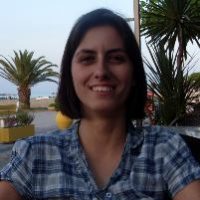
“Acknowledge your inner child. Even though we have found the light in ourselves today, we sometimes forget to heal old wounds of our past. Your inner child still needs to be loved in order to heal the complete self.” ~ Karen A. Baquiran
~
Once, we were all kids.
We were naive and helpless, small and frightened in the big, authoritative world. As such, we feel discomfort and helplessness when we are in situations we consider to be dangerous.
The child in us is hurt, hidden in a dark corner of the room, and he is afraid to come out into the light. He’s been sitting and waiting for someone to save him from that darkness for years. The only person who can save him is himself—now as an older, mature person. Otherwise, he will never heal his wounds and recover from the trauma of the past.
We have neglected our inner child, just as we may have been neglected as children. We took on the negative beliefs and patterns of those who treated us badly. They convinced us that we deserved it, that hate is the only way, that people are bad, and we should not trust anybody. And these beliefs from childhood have played a huge role in our present life.
That’s why we’ve wandered aimlessly, and without meaning, for so long. We’ve looked for love in the wrong people, and for happiness in material things. We’ve always felt unhappy, unloved, and misunderstood. And that’s how our inner child feels all the time. When we neglect ourselves, we are neglecting our inner child and we repress his suffering.
We need to reconnect with the injured parts of ourselves and heal them once and for all. To stop blaming ourselves for things we didn’t do, and the mistakes we did make. Whenever we feel fear, sadness, shame, or anger, the child within us is screaming to be heard—but we don’t hear him above the noise in our minds.
We don’t even know he exists. And now is the time to make amends.
We need to love our inner child, to accept and forgive him, thereby forgiving ourselves.
As a child, I felt guilty each time my parents had a quarrel. I was made to feel worthless by children who made fun of me in school. I felt lonely without any friends. As a result, I became distrustful, depressive, withdrawn. Things might have been different if I had fostered communication with myself, if I had loved myself back then.
Years later, I have now overcome depression. I stopped the blaming and I forgave myself. Now, I nurture myself emotionally and spiritually. The child in me has healed.
The first thing I did was tell my inner child “I love you. Don’t be afraid, I’m here.” I felt strange, speaking to myself. But then I looked in the mirror and saw the sadness in my eyes. A part of me still suffered and wanted to be loved.
After some practice, I felt calmer and more self-confident. This was the beginning of healing the wounds of my past.
After that, I did a guided meditation for the child within me. I felt a great connection with the child that I had been, and I cried for her and all of the feelings I had repressed. This was the second phase of healing.
In the next, the third in a row, I wrote from my inner child, to my current self, telling myself how I felt. And then I wrote a second letter from myself to my inner child. I felt a great relief as my emotions discharged on a paper.
I felt the hurt return for the last time, and then it stopped. I promised my inner child that from now on, I would take care of her, that I’d devote more attention to her, by listening to my inner voice, my intuition, and following my feelings. I promised I would love her and not allow anyone to hurt her anymore.
One last method was looking at a picture of myself as a child. I journeyed back to my childhood, finding my memories and feelings, re-living my experiences. Something about this method is so deep and powerful. Looking into the eyes of the child we were, we get a perspective of how and why we felt that way. We understand and learn the lessons from our past.
We must remember that if we don’t cherish ourselves and provide unconditional love, no one will.
~
Author: Jana Tosic
Image: Micah H./Unsplash
Editor: Catherine Monkman

 Share on bsky
Share on bsky






Read 0 comments and reply